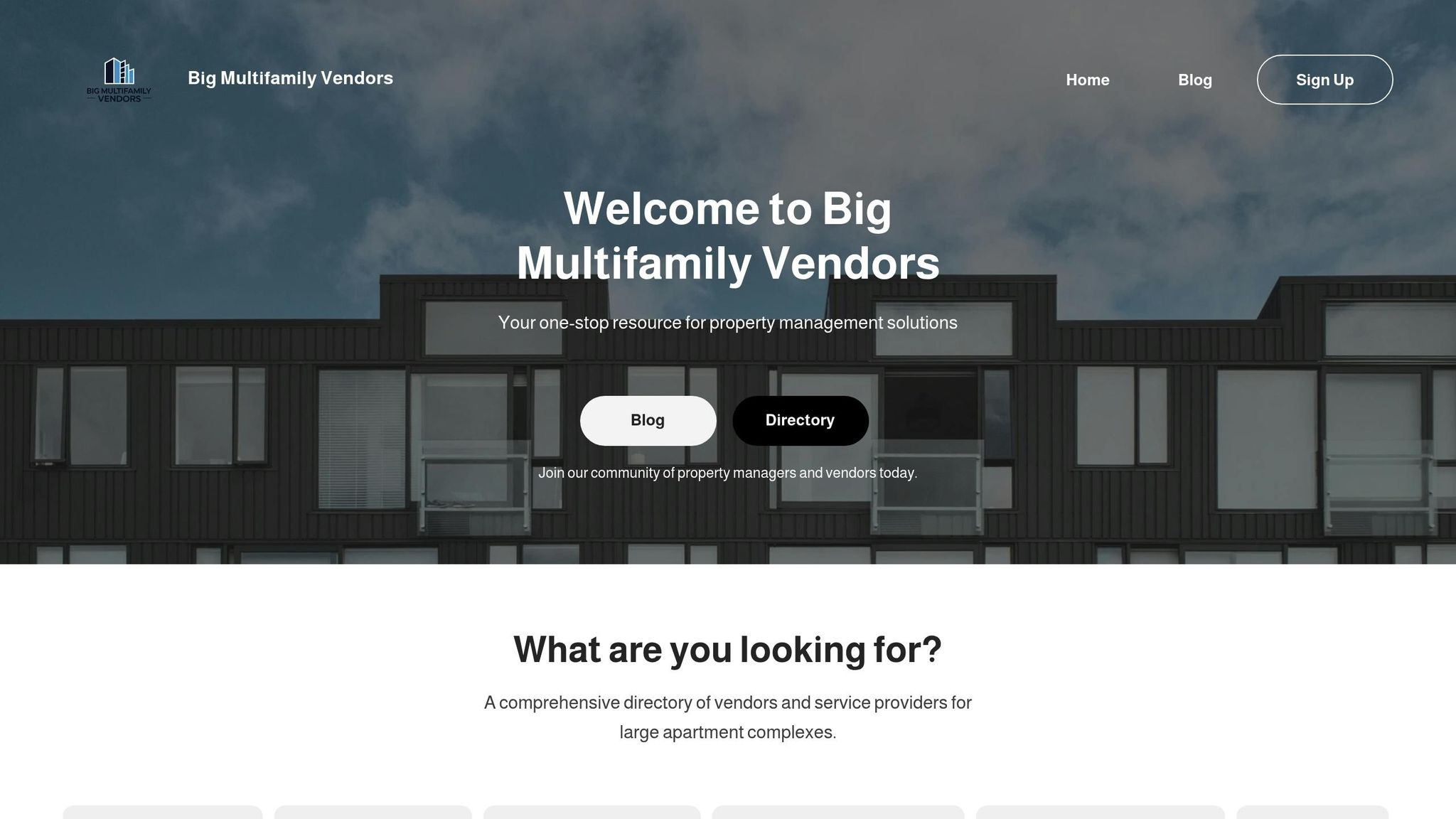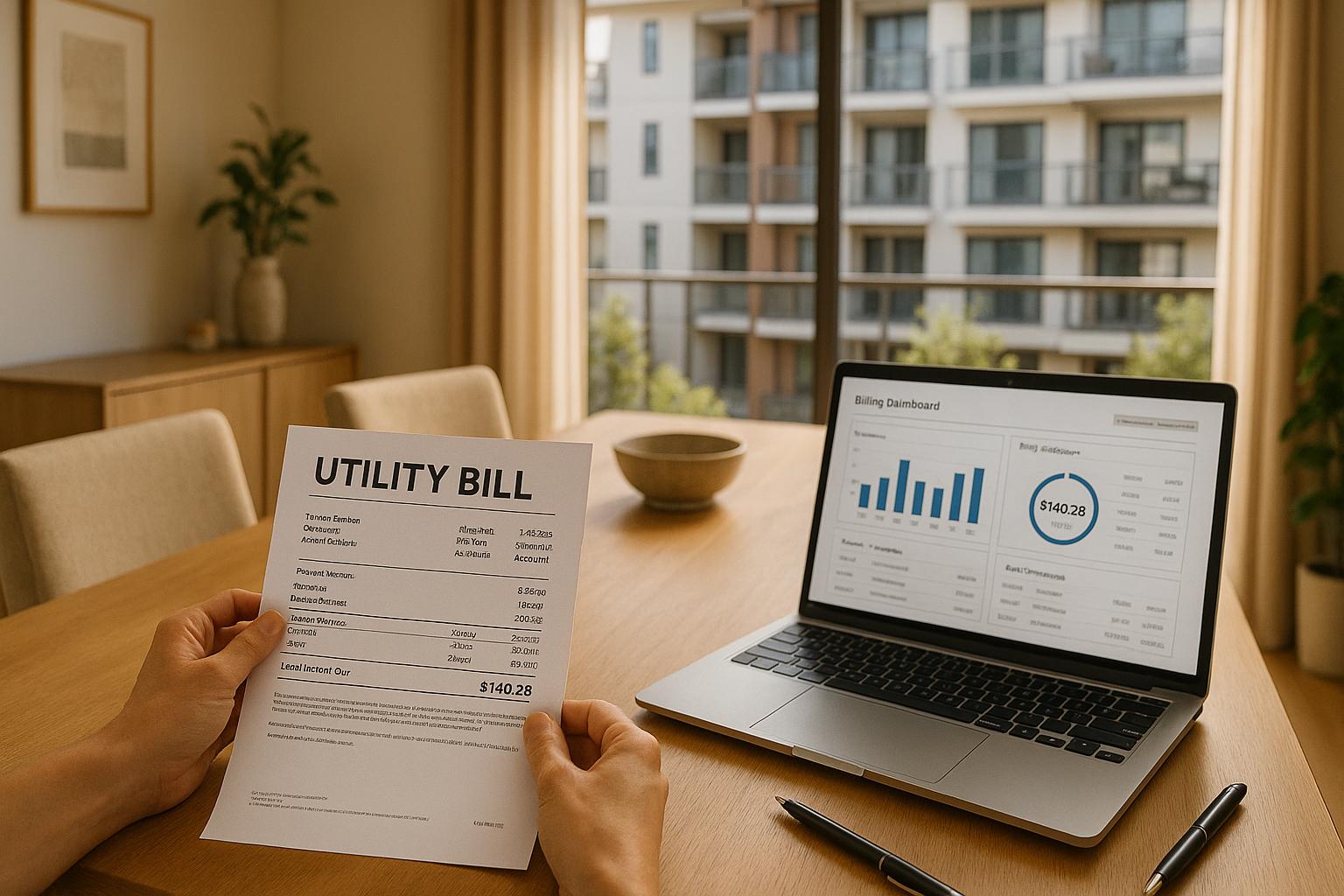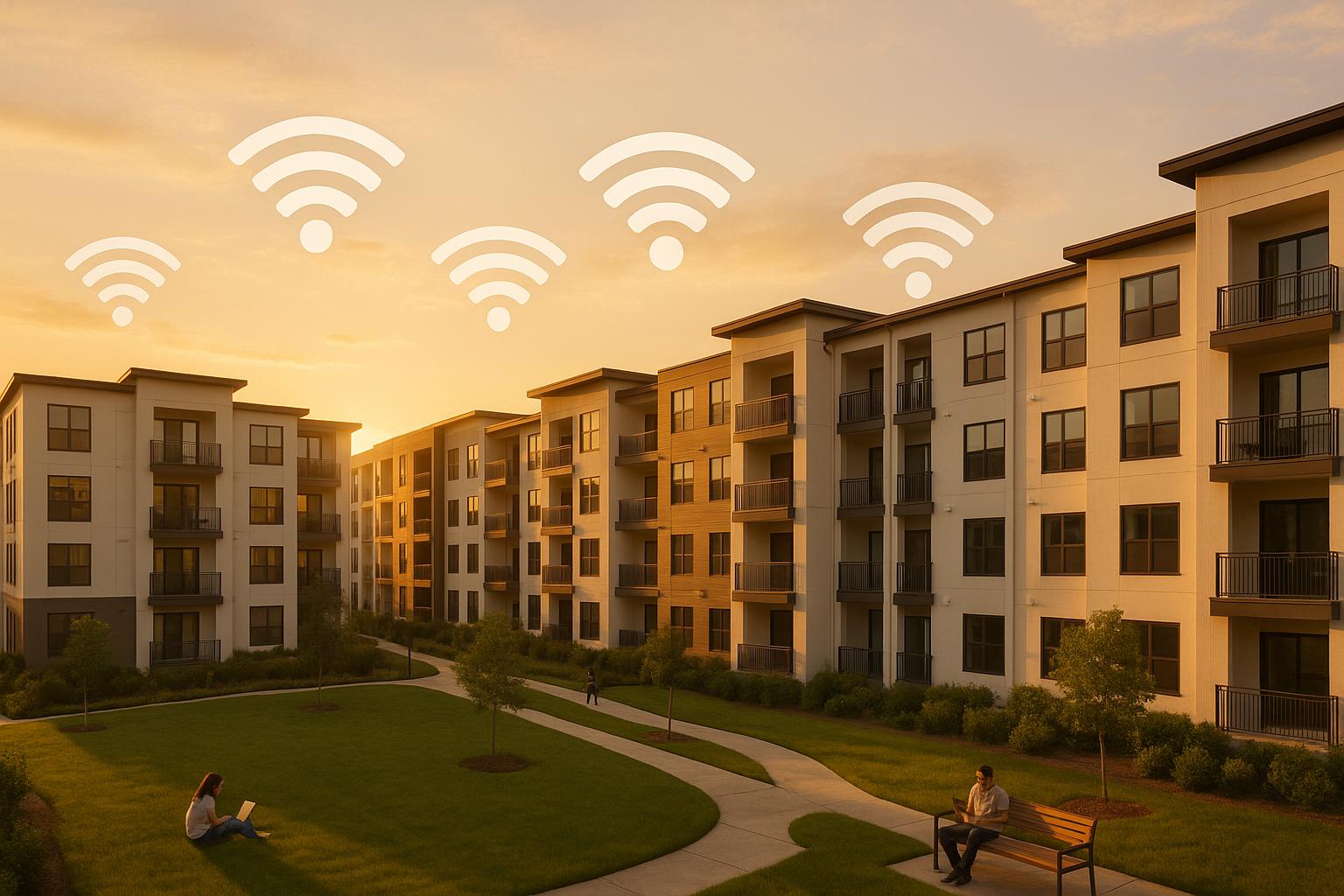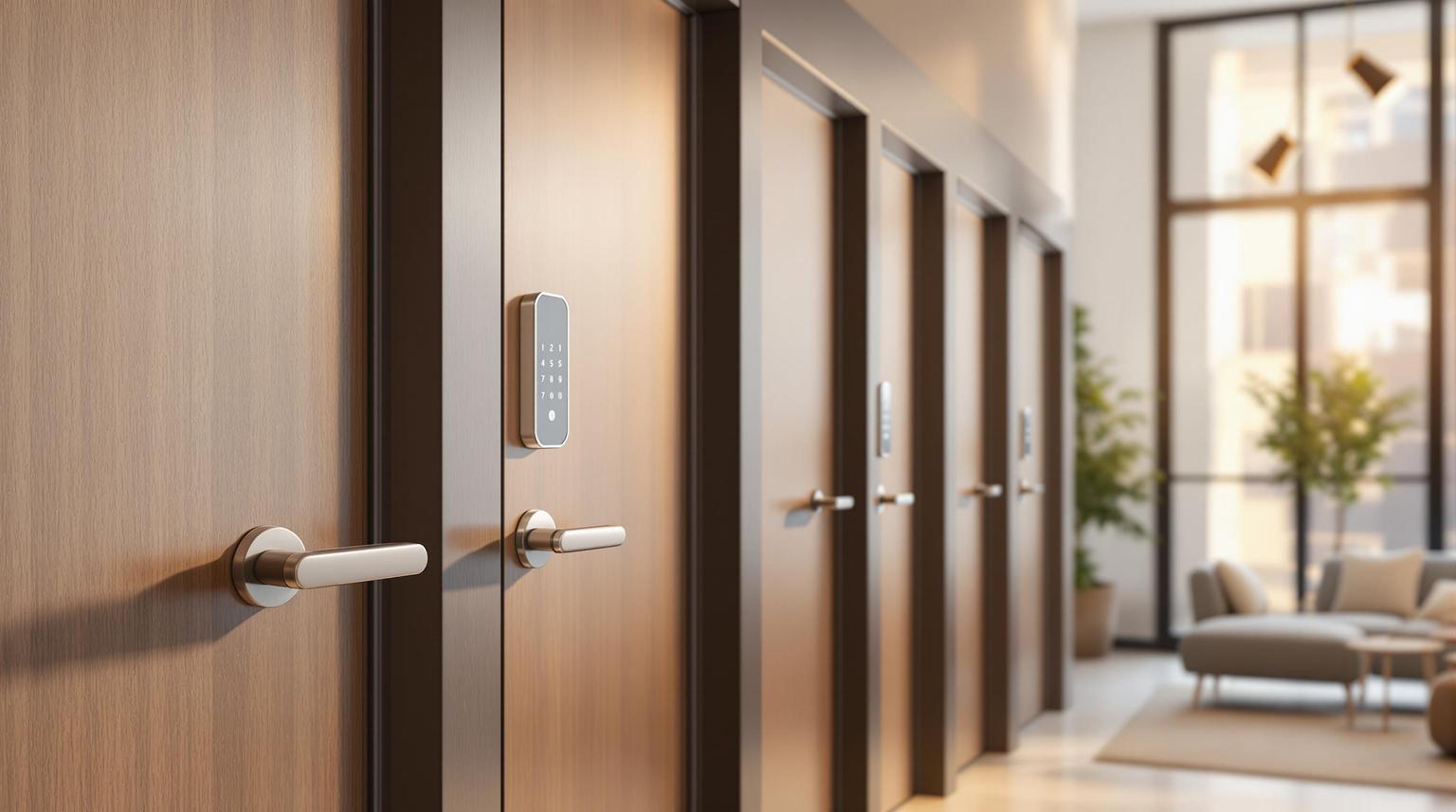When renovating multifamily properties with tenants on-site, balancing construction goals with tenant comfort is critical. Poor planning can lead to complaints, lease cancellations, or revenue losses. Here’s how to manage renovations effectively while keeping tenants satisfied:
- Plan Ahead: Define the project scope, set realistic timelines, and phase renovations to reduce disruptions.
- Communicate Clearly: Provide advance notice, regular updates, and involve tenants in the process.
- Minimize Disruptions: Schedule noisy work during daytime hours, maintain safe common areas, and manage temporary utility shutoffs responsibly.
- Ensure Quality Control: Conduct regular inspections, address issues promptly, and use skilled contractors.
How to Renovate a Rental Property with Existing Tenants w/ Matt Faircloth | Mentorship Monday 083
Project Planning and Timeline Management
Laying out a solid plan is the foundation of any successful multifamily renovation. Good planning separates a smooth renovation experience from tenant chaos. When contractors dive into projects without clear objectives or realistic schedules, it’s the tenants and property owners who bear the brunt of the fallout - think extended disruptions, budget overruns, and strained relationships.
"When it comes to projects with a wide scope, clarity for the scope is a vital prerequisite for project success." - Michael Stanley, CEO of Business Improvement Architects [1]
The most seamless multifamily renovations often begin months before the first hammer swings. This early planning phase determines whether the project will run efficiently or turn into a constant source of tenant complaints and financial headaches.
Setting Clear Project Scope
A well-defined project scope acts as your blueprint for the entire renovation. It outlines boundaries, objectives, and deliverables in straightforward terms, helping to prevent scope creep and avoid unnecessary delays.
Your project scope document should include detailed deliverables, firm timelines, and clear statements about what is - and isn’t - part of the work. This level of detail promotes better communication among contractors, property managers, architects, and engineers, while also creating realistic budgets and resource plans.
Break the project into phases and subphases to provide a clear roadmap. Include a list of required resources and roles to guide both scheduling and budgeting. A realistic timeline with critical milestones should also be part of the plan.
Take, for example, a high-rise office building project that faced tight deadlines and complex stakeholder needs in a bustling urban area. By implementing a thorough scope management plan, the team used tools like a Work Breakdown Structure to divide the project into manageable parts. They also engaged stakeholders through regular meetings and digital collaboration platforms. The result? The building was completed on time and within budget, meeting all tenant and regulatory requirements [2].
Using Phased Renovation Schedules
Phased renovations allow most tenants to stay put while work progresses in stages. Instead of shutting down an entire building, this approach tackles one area at a time, minimizing tenant displacement and disruption.
"In a phased renovation, building limitations and tenant-related criteria are primary ingredients in determining how phasing occurs. It is crucial to obtain tenant buy-in at the outset, involve them at all phases, and keep them fully advised of schedules and changes throughout." - Charles Enos, Principal, Einhorn Yaffee Prescott, Architecture & Engineering [3]
The success of phased renovations hinges on understanding your building’s systems and tenant needs. For example, buildings with large air handling units serving multiple floors might require those floors to be renovated as a group. Meanwhile, buildings with individual systems for each floor offer more flexibility in scheduling.
Renovating entire floors at a time often minimizes disruptions more effectively than a scattered unit-by-unit approach. This strategy reduces the frequency of common area disturbances and optimizes construction resources.
Consider the Moorhead Federal Building project, where the design of the building’s air handling systems dictated the phasing strategy. Floors served by the same system were renovated together, while buildings with smaller, independent systems allowed for greater flexibility in phasing non-contiguous floors simultaneously [3].
Economic factors should also guide phasing decisions. Adjusting phase sizes can lead to significant cost savings. Additionally, careful scheduling of noisy or disruptive activities can help reduce the impact on tenants. By coordinating with tenants to understand their routines, you can plan the most disruptive work during times that cause the least inconvenience.
With the project scope and phasing strategy in place, the next step is to focus on acquiring permits and ensuring compliance with building codes to keep the renovation on track.
Getting Permits and Meeting Code Requirements
Applying for permits early can prevent costly delays and tenant disruptions. While simple permits might take just a week, complex multifamily projects often face much longer timelines. For instance, in San Diego, residential permit processing averaged 176 days in 2024, while multifamily projects typically take 12 to 24 months from start to finish [6][7].
Permits are essential for ensuring that renovations meet safety standards and building codes, which protect both tenants and workers. They also ensure compliance with zoning laws related to modifications, environmental factors, and neighborhood guidelines.
The permitting process involves inspections at various stages to ensure the work aligns with approved plans. These inspections catch potential issues early, preventing costly corrections later that could prolong tenant disruptions.
"By obtaining the necessary permits, project owners and contractors demonstrate their commitment to responsible construction practices and contribute to the overall integrity of the construction industry." [5]
Collaborating early with local building authorities can help identify potential hurdles before they escalate into major setbacks. Schedule pre-construction meetings to address code compliance issues and conduct regular reviews during the design and construction phases.
Properly permitted work not only maintains or increases property value but also avoids fines or the need to undo completed renovations. Additionally, unpermitted work can void insurance coverage for damages or accidents, posing significant financial risks.
To streamline the process, consider hiring accredited code consultants to review project plans and flag potential compliance issues before construction begins. Keep detailed records of all code-related documentation to simplify inspections and avoid delays.
This thorough planning lays the groundwork for clear communication with tenants and smooth operational logistics as the renovation progresses.
Tenant Communication and Trust Building
Good communication lays the foundation for smooth renovations and strengthens the relationship between landlords and tenants. By keeping tenants informed and involved, you can minimize disruptions and build confidence throughout the process.
Giving Advance Notice
Start by providing written notice well ahead of any construction work. This notice should clearly outline the scope of the project, the timeline (including start and end dates), potential disruptions, safety measures in place, and contact details for questions or concerns [8]. Taking the extra step of combining this with personal communication - like a phone call or in-person conversation - shows respect for tenants and helps establish trust.
Sending Regular Updates
Keep tenants in the loop with consistent updates during the renovation. Use a mix of email, text messages, and posted notices to share brief progress reports. These updates should be clear and to the point, addressing any questions or concerns promptly to prevent small misunderstandings from turning into bigger problems [8]. Regular communication reassures tenants without overwhelming them.
Working Around Tenant Schedules
Whenever possible, plan work to accommodate tenant routines. Let tenants know in advance about any activities that might disrupt their daily lives. Being transparent about the schedule and showing flexibility demonstrates consideration, further strengthening trust during the renovation process.
Logistics and Safety: Reducing Disruption
Careful planning and strong safety measures are essential for protecting tenants and ensuring renovation projects stay on schedule. By focusing on strategic scheduling, secure work zones, and proper utility management, you can significantly improve tenant satisfaction and minimize disruptions during construction.
Setting Work Hours to Limit Noise
Schedule noisy activities like drilling, hammering, or using power tools between 9:00 AM and 5:00 PM on weekdays. These hours are ideal for reducing disturbances, particularly in buildings with remote workers or families, as they align with times when many tenants are likely out at work or school. Clearly document these work-hour policies and share them with tenants and contractors to avoid misunderstandings. Having this written policy in place also sets clear expectations for addressing noise-related issues.
Keeping Common Areas Safe
Protecting common areas is crucial for tenant safety. Use access control systems such as key cards or biometric scanners to limit entry to construction zones [12]. Define these zones with plastic sheeting and regularly clean them with HEPA vacuums to control dust and debris [10][13]. Enhance security by installing cameras and using remote video monitoring systems with AI to detect unusual activity [9][11]. Add clear, multilingual signs like "Do Not Enter - Authorized Personnel Only", and ensure common areas are well-lit to discourage unauthorized access [10][11].
Handling Temporary Utility Shutoffs
When temporary utility interruptions are necessary, provide tenants with written notice that includes details such as the affected areas, expected duration, and contact information [4][14]. Schedule these shutoffs during off-peak hours to reduce inconvenience, and work closely with service providers to minimize downtime. Maintain essential services - like water, electricity, and internet - whenever possible, and offer temporary solutions if outages occur. Keep tenants informed with regular updates about progress and estimated restoration times to ease any concerns.
sbb-itb-58157f8
Quality Control and Accountability
Keeping a close eye on quality during your renovation project not only safeguards your investment but also strengthens tenant relationships. This process works hand-in-hand with effective planning and communication, ensuring smoother operations. Consistent quality checks help avoid expensive rework, keep timelines on track, and leave tenants satisfied when the job is done.
"Quality control isn't just a checkbox - it's the foundation of a successful renovation, impacting everything from the durability of materials to overall satisfaction." [16]
Regular Site Inspections
Weekly site inspections are essential for monitoring workmanship, material quality, and adherence to the timeline. Use timestamped photos and detailed notes to document each visit, noting specific areas inspected.
Appoint a quality control manager with experience in multifamily construction and a strong grasp of building codes. Their role should include inspecting each unit to ensure it meets the required standards. Key milestones - like rough-in inspections, drywall completion, and finish installations - are critical points for their involvement [16].
Leverage project management software to track inspection findings in real time. This tool keeps the team aligned, documents issues immediately, assigns corrective actions, and ensures progress without stalling subsequent tasks [15].
Final Inspections and Punch Lists
At the end of each phase, conduct a thorough inspection of every unit. Verify compliance with local codes, confirm systems are functioning properly, and ensure the work aligns with your project specifications. Use detailed photos and notes to document findings and confirm all permits are closed out correctly.
This final inspection phase is crucial for post-construction quality assurance. It helps prevent future problems and provides property management teams with a clear record of completed work [15].
Inspection Methods: In-House vs. Third-Party
Decide whether to use internal or third-party inspectors based on your project's scope, budget, and expertise needs. Share detailed finish schedules and specifications with your team to set clear quality expectations. These documents should include precise product information, like brand names, model numbers, installation guidelines, and quality benchmarks [17].
Consistently gather feedback from workers and tenants throughout the project [16]. This open communication helps spot potential issues early, allowing for quick adjustments.
"In multifamily construction, quality control is not just a process but a promise of excellence." [16]
Use high-quality materials that fit your budget and hire skilled craftsmen familiar with multifamily renovation standards. It's worth noting that properties with lower initial quality often see the most rent growth after renovations, compared to the broader market [18].
Using Resources from Big Multifamily Vendors

Managing renovation timelines while ensuring tenant satisfaction requires not just careful planning but also the right tools and connections. Big Multifamily Vendors serves as a go-to hub for contractors and property managers, offering a mix of practical resources and collaborative insights. These tools complement earlier strategies in planning and communication, helping to keep projects on track. With a projected shortage of 400,000 skilled workers [20], having proven methods and dependable industry networks is more important than ever. Let’s dive into the guides, tools, and community networks offered by Big Multifamily Vendors.
Finding Renovation Guides and Tools
Big Multifamily Vendors provides a variety of construction schedule templates, available in formats like Excel, Word, Google Docs, Google Sheets, and PDF [19]. These templates are fully customizable, allowing you to adjust them for specific project needs and tenant considerations. They’re designed to minimize delays, optimize resource use, and improve team coordination. You’ll find options tailored to various project types, including residential construction schedules, commercial templates, and formats specifically for renovations [19].
In addition to templates, subscribers gain access to a private content archive filled with detailed renovation guides, best practice documents, and case studies from successful multifamily projects. This ever-growing library covers topics like permit management and effective tenant communication, offering new insights to tackle common challenges.
Connecting with Industry Communities
The Big Multifamily Vendors community offers a space for contractors and property managers to network and share solutions. With 89% of construction firms struggling to find qualified workers and 61% facing delays due to labor shortages, these connections are crucial [20]. Community members exchange ideas on managing labor shortages, dealing with rising material costs, and maintaining quality control. These discussions often lead to practical referrals for dependable contractors, vendors, and skilled tradespeople familiar with multifamily requirements.
Subscribers also share tips on cutting costs, creating schedules that minimize tenant disruption, and implementing quality control measures to avoid costly mistakes.
"We are big believers in the California market and are committed to bettering the communities we operate in." - Zach Schamp, Director of Development, Greystar [21]
Through email newsletters and interactive community features, members stay informed about industry trends, regulatory updates, and innovative approaches to managing multifamily renovations. This ongoing exchange of ideas becomes especially valuable when addressing skill gaps in the workforce - over two-thirds of construction firms report that applicants lack the necessary skills [20]. Members frequently share information on training programs, apprenticeships, and strategies for building in-house expertise that aligns with multifamily renovation standards. These shared insights help streamline project management and reinforce the strategies discussed earlier.
Conclusion: Key Takeaways for Renovation Success
Successfully managing multifamily renovations while keeping tenants happy hinges on four main strategies: thorough planning, clear communication, prioritizing safety, and maintaining consistent quality control. These steps not only keep renovation projects on track but also help ensure tenants feel respected and valued throughout the process.
Start with detailed planning. Clearly outline the scope of work, set realistic timelines, and create phased schedules to avoid unnecessary delays. This approach keeps parts of the property functional, even during a typical 12- to 24-month renovation period[22].
Communication is key. Keeping tenants informed with advance notices and regular updates builds trust and patience. Studies show that strong communication reduces both tenant complaints and turnover[22][23][24].
Safety logistics are equally important. Schedule noisy tasks during less disruptive hours, secure shared spaces, and carefully plan temporary utility shutoffs. These measures not only minimize tenant inconvenience but also ensure compliance with safety codes.
Finally, quality control ensures the work meets expectations. Regular site inspections, punch lists, and final reviews help avoid costly rework and keep tenants satisfied with the results.
To make the process even smoother, leverage resources like Big Multifamily Vendors' renovation guides, templates, and professional networks. By consistently applying these strategies, you can improve tenant satisfaction, minimize complaints, and enhance the overall value of your property.
FAQs
What are the best ways to communicate renovation plans to tenants while minimizing disruptions?
Keeping Tenants Informed During Renovations
Clear and early communication is key to minimizing disruptions during renovations. Begin by sharing detailed plans ahead of time, including timelines, work schedules, and any potential inconveniences tenants might face. Regular updates throughout the process will help manage expectations and keep everyone in the loop.
Make use of various communication channels like emails, newsletters, and community boards to ensure that all tenants receive the same information. Show consideration for their needs by addressing concerns quickly and offering practical solutions when challenges arise. Open and honest communication builds trust and helps maintain a positive relationship with tenants throughout the renovation period.
What are the advantages of phased renovation schedules for multifamily properties, and how can they be implemented successfully?
Phased renovation schedules bring several important benefits to multifamily properties. By concentrating construction in specific areas at a time, they help reduce disruptions for tenants, allowing most residents to go about their daily routines with minimal hassle. This method also makes it easier to manage costs, as property owners can allocate funds gradually and handle any unexpected challenges more effectively.
To make phased schedules work well, start with a clear, detailed plan that divides the project into smaller, manageable stages. Schedule construction during off-peak hours to lessen the impact on tenants, and maintain open, consistent communication with both tenants and contractors. Keeping everyone updated on the timeline and progress encourages cooperation and helps ensure a smoother renovation process for all involved.
How can contractors maintain quality and meet building codes during renovations?
To ensure top-notch results and adherence to building codes during renovations, start by crafting a comprehensive quality control plan. This plan should outline regular inspections, testing procedures, and detailed documentation for every stage of the work. Reviewing building codes periodically during both the design and construction phases is equally important to identify and address potential problems early on.
Holding pre-construction meetings is another crucial step. These meetings help align everyone's expectations, address any concerns, and clarify code requirements upfront. Additionally, maintaining accurate records of compliance efforts and working closely with local building inspectors throughout the project ensures that all work meets safety and legal standards. Taking these proactive measures guarantees a renovation that is both well-executed and fully compliant.


